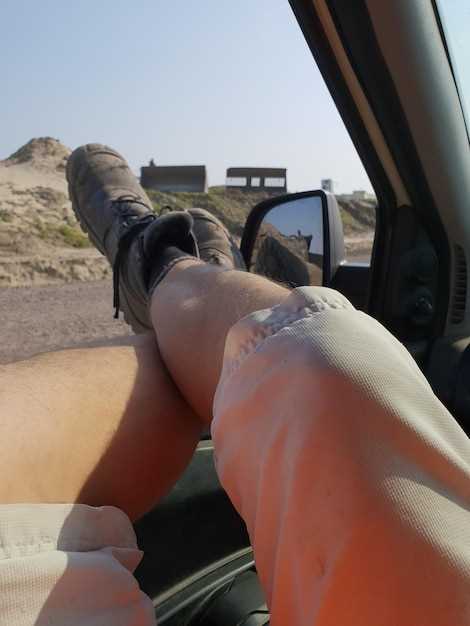
Installing a snorkel on your off-road vehicle is a crucial modification for any enthusiast looking to enhance their adventure capabilities. This mod not only increases your vehicle’s ability to traverse through deep water but also improves engine performance by ensuring a cleaner air intake. By elevating the air intake point, you protect your engine from water ingestion, which is vital in off-road conditions.
In this guide, we’ll walk you through the installation process of a snorkel, highlighting the necessary tools and steps to ensure a successful setup. Whether you’re a seasoned off-road veteran or a newcomer ready to tackle muddy trails, understanding how to properly install and utilize a snorkel will make your outdoor experiences safer and more enjoyable.
By following this comprehensive approach, you will not only boost the functionality of your vehicle but also appreciate the nuanced engineering that goes into off-road modifications. Let’s dive into the step-by-step instructions for your snorkel installation.
Choosing the Right Snorkel Kit for Your Vehicle

Selecting the appropriate snorkel kit for your off-road vehicle is essential for enhancing its performance in challenging environments. Start by identifying the make and model of your vehicle, as snorkel kits are often specifically designed to fit particular models. This ensures compatibility and optimal functionality.
Consider the type of terrain you will be traversing. If you frequently drive through deep water or muddy conditions, a high-mounted snorkel is ideal, as it helps prevent water ingestion into the engine. Look for kits that offer extended air intake height, which can be particularly beneficial for water crossings.
Evaluate the build quality of the snorkel kit. Opt for materials that are durable and resistant to UV rays and corrosion, such as high-density polyethylene or aluminum. These materials will ensure longevity and reliable performance in harsh conditions.
Check the provided installation instructions and whether the kit includes all necessary accessories for a smooth mod. Some snorkel kits may require additional components or tools for installation, so be prepared to budget for those as well.
Finally, read reviews and seek recommendations from fellow off-road enthusiasts. Understanding how different snorkel kits perform in real-world scenarios can provide valuable insights and help you make an informed decision.
Step-by-Step Installation Process for Off-Road Snorkels
Installing a snorkel on your off-road vehicle is a practical modification that enhances your engine’s performance in wet and dusty environments. Follow these steps for a successful installation.
Step 1: Gather Tools and Materials
Ensure you have all necessary tools ready, including a drill, sockets, screwdrivers, and a template for your snorkel mod. Confirm the snorkel kit is complete and compatible with your vehicle model.
Step 2: Prepare the Vehicle
Park your vehicle on a flat, stable surface and disconnect the battery. Clear the work area and remove any components that obstruct access to the air intake.
Step 3: Mark the Drilling Points
Use the provided template to mark the drilling points on the fender or firewall where the snorkel will be installed. Double-check alignment with the air intake system to ensure a proper fit.
Step 4: Drill Holes
Carefully drill holes at the marked locations. Use a step drill bit for a clean finish, and always wear protective eyewear. Deburr the edges of the holes to prevent damage to the snorkel or surrounding components.
Step 5: Install the Snorkel Base
Fit the snorkel base onto the drilled holes, ensuring a snug fit. Use sealant around the base to prevent water ingress. Secure the base with provided screws or bolts, following the manufacturer’s specifications.
Step 6: Connect the Intake Pipe
Attach the intake pipe to the snorkel base, ensuring it aligns properly with the air intake system. Use clamps to secure connections, checking for tightness to avoid any potential leaks.
Step 7: Position the Snorkel Arm
Position the snorkel arm at the desired angle, typically upwards to minimize water entry. Secure it with brackets provided in the kit, ensuring it is stable and well-supported.
Step 8: Final Adjustments
Make any necessary adjustments to the snorkel’s positioning for clearance from other components. Recheck all connections, ensuring the intake is firmly attached and properly sealed.
Step 9: Reassemble Vehicle Components
Reinstall any components you removed for access. Connect the battery and check all systems for functionality, ensuring no tools are left in the engine bay.
Step 10: Test the Installation
Before heading off-road, test the snorkel by running your vehicle to confirm there are no air leaks and that the engine functions correctly. If satisfied, your snorkel mod is ready to tackle challenging terrains.
Common Mistakes to Avoid During Snorkel Installation

Installing a snorkel on your off-road vehicle can significantly enhance its capability to traverse deep water, but several common mistakes can hinder its performance. Awareness of these pitfalls can ensure a smoother installation process.
One frequent mistake is neglecting to read the installation manual thoroughly. Each snorkel mod may have specific requirements and steps that are crucial for proper fitting and function. Skipping this step can lead to improper installation, which may result in water ingress during operation.
Choosing the wrong mounting location is another significant error. The snorkel should be positioned in a way that optimizes airflow while keeping it away from potential damage. Make sure to assess the vehicle’s layout and avoid placing the snorkel too close to heat sources or moving parts.
Improper sealing is a critical oversight that can lead to water leaks. Using inadequate sealing materials or failing to ensure tight connections can result in moisture entering the engine, risking severe damage. Always use high-quality seals and test for tightness after installation.
Forgetting to check the air intake route is also a common misstep. It’s essential to ensure that the snorkel aligns correctly with the vehicle’s air intake system. Misalignment can cause turbulence, reducing the efficiency of air intake and potentially affecting engine performance.
Lastly, many installers overlook the importance of securing the snorkel adequately. Relying solely on adhesive or insufficient fasteners can lead to the snorkel detaching during off-road adventures. Make sure all components are securely fastened and double-check the stability of the installation.
